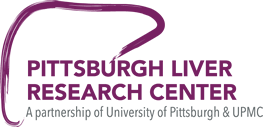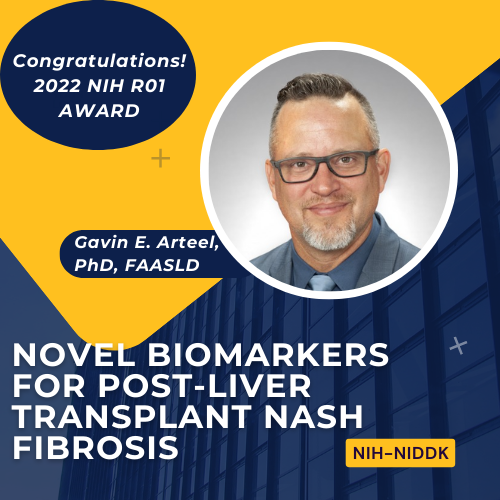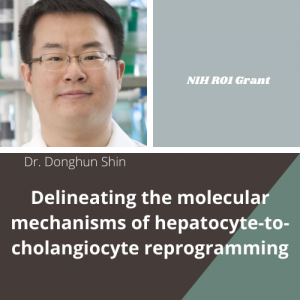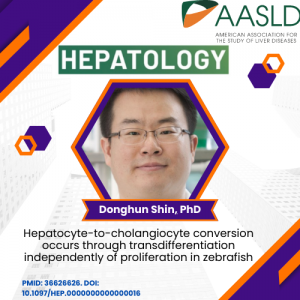Dr. Gavin E. Arteel, Professor of Medicine, Pilot and Feasibility Core Director of the Pittsburgh Liver Research Center, received NIH R01 funding from the NIDDK for his grant entitled, “Novel Biomarkers for Post-Liver Transplant NASH Fibrosis” The grant was co Authored by former PLRC members Drs. Takis Benos and Andres Duarte Rojo.

Abstract/Narrative:
Our overarching goal is to develop minimally invasive approaches to better predict outcome and novel mechanisms in post-liver transplant (LT) NASH fibrosis. Although LT is an effective therapy for NAFLD cirrhosis, the risk of post-transplant NAFLD is alarmingly high, particularly for recurrent non-alcoholic steatohepatitis (NASH) with an incidence of up to 70% at 5 years. Effective approaches to predict risk hamper the treatment and prevention of post-LT NASH fibrosis. The hepatic extracellular matrix (ECM) responds dynamically to organ injury and ECM turnover increases; we propose to take advantage of this to develop new biomarkers for post- LT NASH fibrosis. The peptidome, low molecular weight peptides in biologic fluids, includes not only synthesized peptides, but fragments of degraded proteins (i.e., ‘degradome’). We hypothesize that the ECM degradome in plasma will yield new biomarkers to predict outcome and mechanisms in post-LT NASH fibrosis. We will test this hypothesis via the following Specific Aims: 1). To identify key changes in the peptidome of post- LT NASH with fibrosis.. Unbiased peptidomics and multivariate analyses will identify degradomic features independently linked to prognosis. Protease activity that could produce significantly changed peptides will be predicted using Proteasix. We will also determine the mechanistic role of ECM turnover in the in parallel established NAFLD/NASH. 2) To develop clinically-actionable predictive models of NASH and fibrosis post-LT. Whereas we expect the results of Aim 1 to establish that the peptidome profile in patients correlates with overall outcome, biomarkers alone are often insufficient to accurately predict individual patient outcome. We will therefore employ machine learning methods like probabilistic graphical models (PGMs) over mixed data types to integrate peptidomic and individual patient clinical data, into a single probabilistic graphical framework. The resulting graphs will then be used to infer causal interactions between variables, select informative biomarkers that will more specifically predict the outcome, and gain new mechanistic insight into the biology of post-LT NASH (hypothesis generation). 3) To validate the use of the peptidome as a predictive tool for determining post-LT NASH fibrosis. Using a large prospectively-designed patient cohort with established outcomes, we will test the ability of the algorithms and biomarkers generated in this study to predict outcome. The successful completion of the proposed work will produce significant results at various levels: (1) Biomarker discovery: we will identify biomarkers and conditional biomarkers. (2) Mechanistic understanding of post-LT NASH fibrosis: our models will generate hypotheses about the interactions between variables at different scales (molecular, individual) that will provide insights on the proteins that are involved and potentially new druggable targets. (3) Algorithm development: through this project we will extend our mixed data graph learning algorithms to include time-course variables to be validated using a large prospective LT cohort.










